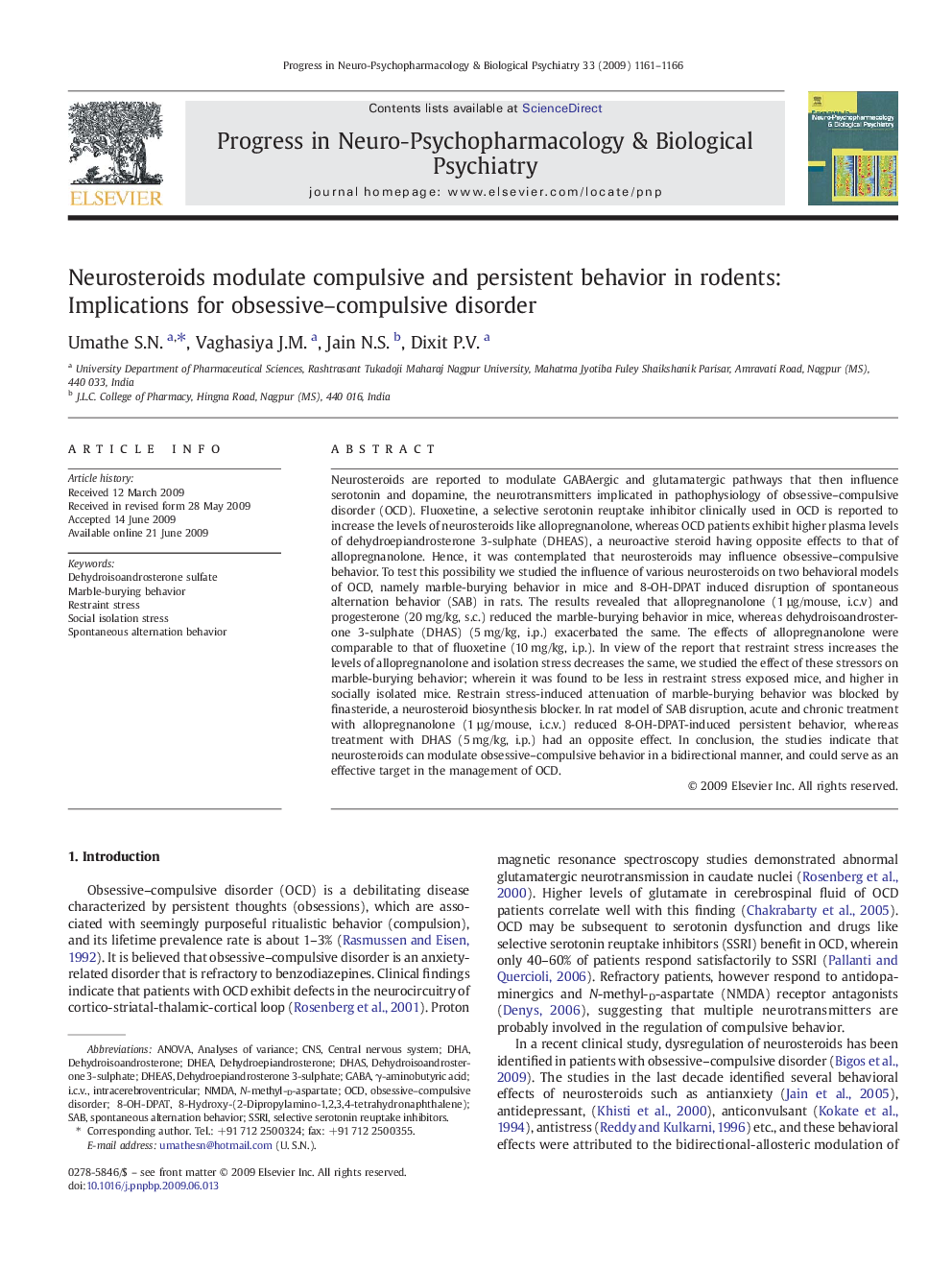| Article ID | Journal | Published Year | Pages | File Type |
|---|---|---|---|---|
| 2565435 | Progress in Neuro-Psychopharmacology and Biological Psychiatry | 2009 | 6 Pages |
Neurosteroids are reported to modulate GABAergic and glutamatergic pathways that then influence serotonin and dopamine, the neurotransmitters implicated in pathophysiology of obsessive–compulsive disorder (OCD). Fluoxetine, a selective serotonin reuptake inhibitor clinically used in OCD is reported to increase the levels of neurosteroids like allopregnanolone, whereas OCD patients exhibit higher plasma levels of dehydroepiandrosterone 3-sulphate (DHEAS), a neuroactive steroid having opposite effects to that of allopregnanolone. Hence, it was contemplated that neurosteroids may influence obsessive–compulsive behavior. To test this possibility we studied the influence of various neurosteroids on two behavioral models of OCD, namely marble-burying behavior in mice and 8-OH-DPAT induced disruption of spontaneous alternation behavior (SAB) in rats. The results revealed that allopregnanolone (1 µg/mouse, i.c.v) and progesterone (20 mg/kg, s.c.) reduced the marble-burying behavior in mice, whereas dehydroisoandrosterone 3-sulphate (DHAS) (5 mg/kg, i.p.) exacerbated the same. The effects of allopregnanolone were comparable to that of fluoxetine (10 mg/kg, i.p.). In view of the report that restraint stress increases the levels of allopregnanolone and isolation stress decreases the same, we studied the effect of these stressors on marble-burying behavior; wherein it was found to be less in restraint stress exposed mice, and higher in socially isolated mice. Restrain stress-induced attenuation of marble-burying behavior was blocked by finasteride, a neurosteroid biosynthesis blocker. In rat model of SAB disruption, acute and chronic treatment with allopregnanolone (1 µg/mouse, i.c.v.) reduced 8-OH-DPAT-induced persistent behavior, whereas treatment with DHAS (5 mg/kg, i.p.) had an opposite effect. In conclusion, the studies indicate that neurosteroids can modulate obsessive–compulsive behavior in a bidirectional manner, and could serve as an effective target in the management of OCD.
